INDIAN ARMED FORCES CHIEFS ON
OUR RELENTLESS AND FOCUSED PUBLISHING EFFORTS

SP Guide Publications puts forth a well compiled articulation of issues, pursuits and accomplishments of the Indian Army, over the years

I am confident that SP Guide Publications would continue to inform, inspire and influence.

My compliments to SP Guide Publications for informative and credible reportage on contemporary aerospace issues over the past six decades.
Satellites, Samples & Station strengthening China's space footprint
China's taikonauts recently conducted their first spacewalk aboard the multi-module space station, Tiangong.
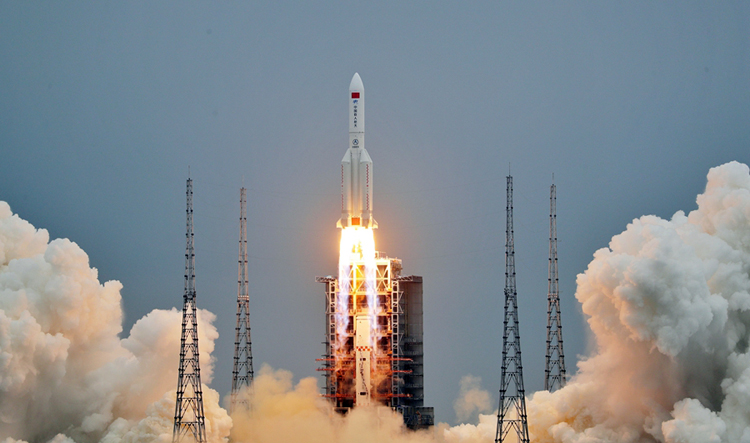
With the intentions of collecting samples from a near-Earth asteroid, additional lunar polar exploration missions,completion of space station before the next decade, China is pacing up space race.
Two decades ago, the first orbiting laboratory was launched. The international Space Station (ISS) by National Aeronautics and Space Administration (NASA) has been a constant habitat for humans in the lower Earth orbit (LEO). Twenty plus years after that China launched the core capsule of its space station this year, formally embarking on the “buildup of one of the humanity's largest and most sophisticated space-based facilities,” as stated by the China National Space Administration (CNSA).
After launching the first module, Tianhe, into the orbit in April, China also sent its first three astronauts, called the taikonauts to the space station in June for the next steps in its construction. Four crewed missions, out of the total of 11 are planned to finish the station by next year.
Over their three months stay, the taikonauts are expected to perform experiments while aboard the station as well as look into the maintenance and its preparation for the further modules.
Over their three months stay, the taikonauts are expected to perform experiments while aboard the station as well as look into the maintenance and its preparation for the further modules. Recently China’s state TV displayed, Liu Boming and Tang Hongbo, two of the three Chinese astronauts conducting spacewalks.
CNSA informed that the 22.5 tonnes capsule, Tianhe is the biggest and heaviest spacecraft China has ever constructed, with the weight equivalent to that of 15 ordinary-sized cars put together. In April, the Long March 5B heavy-lift carrier was launched from the Wenchang Space Launch Center in Hainan province. With a core stage and four side boosters, the rocket has a liftoff weight of 849 tons, capable of sending a 25 ton payload to orbits near Earth, being the only rocket in China that can launch Tiangong's heavy components.
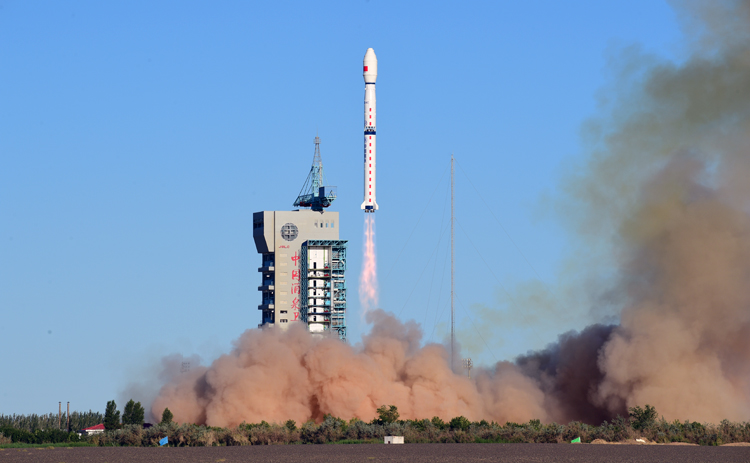
The multi-module space station, named Tiangong, or Heavenly Palace in Chinese, will majorly consist of three components-a core module attached to two space laboratories-with a combined weight of nearly 70 tonnes. Tianhe will be central to the space station's future operations, given that astronauts will live there and control the entire station from inside. Scientific experiments shall also be hosted at the station.
Construction for the space station marks the beginning of the third stage in China's manned space program, which was approved by the government in 1992. The program's first two stages had concluded successfully with six manned spaceflights and two experimental space lab missions earlier, CNSA had stated.
After astronauts launched on the Shenzhou XII mission recently, the Shenzhou XIII mission is next in line to take up more crew members followed by two cargo ships within a few months to prepare the module for docking with other parts of the station. Next year, Tiangong's two space labs, two manned missions and two robotic cargo flights will take place to continue the station’s construction.
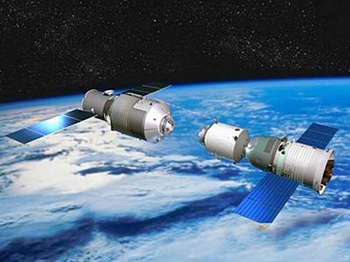
Manned by three astronauts in extended shifts that will last several months, the facility will be capable of docking with multiple crewed and cargo spaceships at the same time once completed. It will also be able to link with foreign spacecraft if they have designated docking hatch. During handovers between shifts, the station will accommodate up to six astronauts.
The entire Tiangong station is expected to become fully operational around the end of 2022 and is set to work for about 15 years. CNSA also informed that in addition to its own components, the station will also be accompanied by an optical telescope that will be lifted after the station's completion to fly together with it, according to them.
Hao Chun, Director of the China Manned Space Agency, said that the scientists will be able to use the facility's unique environment to perform mutation breeding, produce special medicines and create new materials, thus generating scientific, technological and economic benefits. China is also open to cooperation with foreign nations in the space station project.
The entire Tiangong station is expected to become fully operational around the end of 2022 and is set to work for about 15 years.
The Chinese agency has signed agreements with the United Nations Office for Outer Space Affairs (UNOOSA) on space station cooperation. The two organisations jointly published an announcement of opportunity, inviting scientists from around the world to submit their research proposal for an opportunity to conduct their own experiments on board the Chinese station.
"By now, 17 foreign nations have confirmed their participation in nine scientific tasks on our station and related work is proceeding well," Hao said. "Next, we will continue working with the UNOOSA to solicit proposals for future scientific collaborations."
Constant additions
This year, China has been in the space sector news more than ever. Apart from the space station launch, China’s Mars rover is performing well and sending images from the neighbouring red planet. In addition to that it has also brought back nearly 2 kilograms of rock and soil samples to from the surface of the Moon. A 100-gram sample of lunar soil has infactbeen added to the collection of the National Museum of China and is available for public viewing.
Continuing its space ambitions and commitment, China launched Fengyun 3E, the world's first early morning orbit weather satellite for civil use in July. It is expected to improve global weather forecast and assist in achieving 100 percent global data coverage every six hours.
Zhang Peng, Deputy Director of the National Satellite Meteorological Center, China, also the chief commander of the Fengyun 3 series ground system, said, “With a designed lifetime of eight years, Fengyun 3E belongs to the polar-orbiting satellite group whose combination monitors weather, climate and environment of the whole world.”
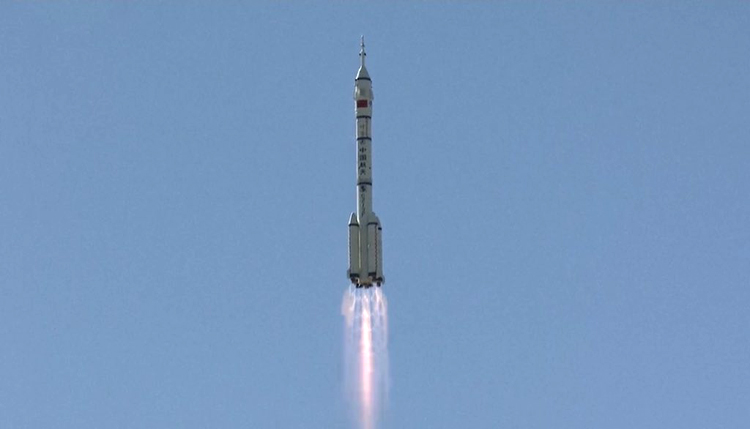
"Polar-orbiting satellites can be divided by orbits whose passes are at different local times. Before Fengyun 3E, polar-orbiting weather satellites operated only in AM and PM orbits above the Earth. The newly launched one will complement the two previous orbits in time period and spatial coverage to increase mid and long-term weather forecast's accuracy," he said.
Tang Shihao, Chief Designer of the Fengyun satellites' engineering application system, said that Fengyun 3E will also fill the data gap by monitoring atmospheric conditions in early morning and at dusk — time periods that AM and PM ones can't cover. "Sunlight conditions during sunrise and sunset are not favorable for imaging during a day. We added night camera functions to take clear pictures. The atmospheric conditions at the time remain the most stable of a day and analysis on them can represent climatic characteristics the most. Certain weather events including fogs always occur in early morning and the satellite can detect and forecast them to aid transportation," he said.
China launched Fengyun 3E, the world's first early morning orbit weather satellite for civil use in July.
Fengun 3E can also assist researches on urban economic activities, fire detection and air pollution monitoring. Other new remote-sensing product on Fengyun 3E involve imaging facilities for solar activities and wind fields. All the data can be transmitted to ground systems, five of which are in China and two in north and south poles, in two hours, CNSA informed. The data will be shared globally.
China launched its first weather satellite, Fengyun 1A, in 1988. Since then, it has put 19 Fengyun meteorological satellites into space. At present, China has nine weather satellites in orbits, of which five are geostationary that travel above the equator and synchronous with the Earth and four are polar-orbiting. As of now only the United States, the European Union and China have both the geostationary and polar-orbiting weather satellites.
More recently China successfully sent two multimedia satellites into pre-set orbit from the Taiyuan Satellite Launch Center in north China's Shanxi Province. The satellites were launched by a Long March-6 carrier rocket, marking the 382nd flight mission for the Long March series carrier rockets.
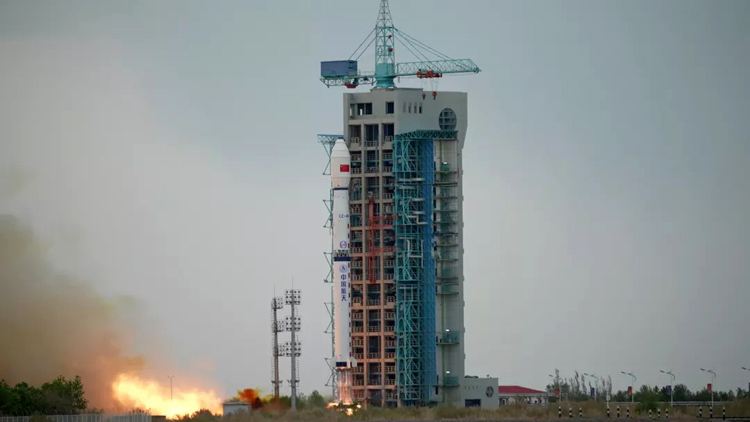
China had also launched its latest oceanographic research satellite in May this year. The HY-2D, launched on a Long March 4B carrier rocket is tasked with working with its two predecessors — the HY-2B and the HY-2C — to form a space-based network monitoring the dynamic marine environment around the clock.
In June this year CNSA also released the first volume of the International Lunar Research Station (ILRS), a guide for partnership as well as the ILRS roadmap. The ILRS is jointly initiated by the CNSA and the State Space Corporation "Roscosmos" on each of their existing lunar exploration plan. CNSA and Roscosmos are jointly inviting interested international partners to cooperate and contribute for the exploration and use of Moon.
The guide defines ILRS as a complex experimental research facilities to be contructed with a possible attraction of partners on the surface and/or in the orbit of the Monn designed for multi-discipline and multi-purpose scientific research activities, including exploration and use of the Moon, moon-based observation, fundamental research experiments and technology verification, with the capability of long-term unmanned operation with the prospect of subsequent human presence.
With so many feats already accomplished this year and many more ambitious endeavours in the pipeline of the near future, China is evidently expanding the list of space faring nations and appears set to be at the top of it.





